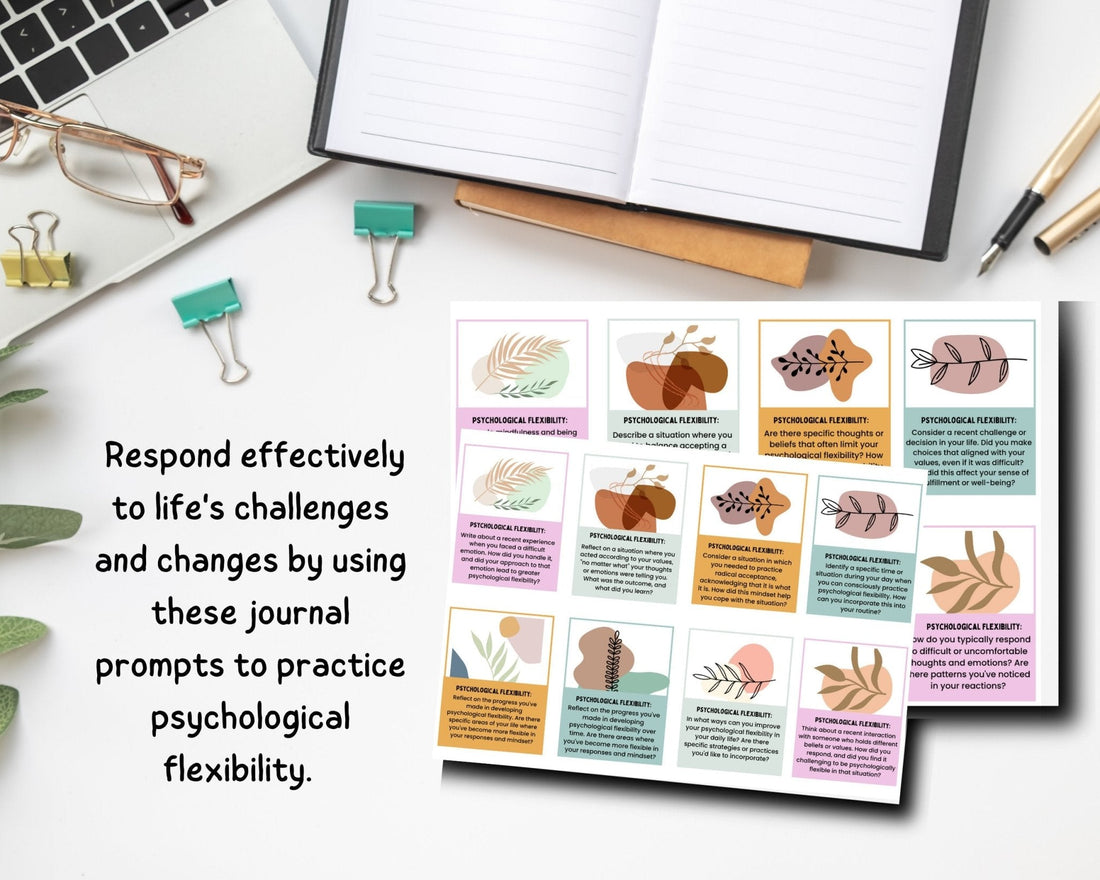
7 ACT Therapy Exercises to Build Psychological Flexibility and Emotional Wellbeing
Acceptance and commitment therapy (ACT) has emerged as a tool for face-to-face growth, knowledge well-being. By focusing on acceptance and heedfulness strategies,
Act helps individuals develop science flexibility, thereby reducing stress and enhancing affectional resilience. Whether you're grappling with emotion or search to improve your health, Act provides exercises to guide you toward a Thomas More fulfilling life.
Of all time wondered how a simple shift in mentality can transmute your subjective growth journey?
Key Takeaways
- Discover the power of mindfulness meditation to heighten psychological tractability and reduce psychological state
- Learn how values clarification can coordinate your actions with your core beliefs for meaty decision-making
- Explore committed action plans that align with values to boost self-improvement
- Understand the importance of acceptance exercises in fostering aroused upbeat
- Uncover the benefits of observant thoughts as transient events to cultivate mental clarity

1. Mindfulness Practice for Psychological Flexibility
Mindfulness — or attentiveness to the present moment — is a cornerstone of ACT therapy. This practice invites you to observe your breathing, sensations, and thoughts without judgment, cultivating awareness and acceptance of what is happening right now.
By practicing mindfulness, you can:
- Reduce stress and anxiety.
- Increase mental clarity and focus.
- Build resilience by responding — not reacting — to challenges.
To begin, find a quiet space and gently focus on your breath. As thoughts arise, acknowledge them, and allow them to pass — like clouds in the sky. Regular practice helps you become more grounded, present, and emotionally balanced.
2. Values Clarification for Personal Growth
ACT teaches that living according to your values — not just your goals — is key to psychological wellbeing. Values give your actions meaning and direction, even during challenging times.
Reflect on what truly matters to you.
- What kind of person do you want to be?
- What relationships or causes give you purpose?
- What actions reflect your deepest beliefs?
When your decisions align with your values, motivation and fulfillment naturally grow. This clarity helps reduce the inner conflict between what you want to do and what you actually do.
3. Committed Action Plans for Self-Improvement
Once your values are clear, committed action turns them into real change.
Start by setting small, specific goals that align with your principles — such as practicing self-care, setting boundaries, or reconnecting with loved ones. Break these into manageable steps and celebrate progress along the way.
Committed action builds confidence and accountability. Over time, it transforms intentions into habits, helping you move steadily toward a life that reflects your authentic self.
4. Acceptance Exercises for Emotional Wellbeing
Acceptance is not about giving up or suppressing your feelings — it’s about allowing them to exist without judgment. In ACT, acceptance exercises help you make space for discomfort while focusing on what matters most.
When painful emotions arise, acknowledge them kindly. Say to yourself:
“I’m noticing sadness,” or “I’m feeling anxious right now.”
Labeling emotions with gentle awareness reduces their intensity. This practice fosters emotional regulation, resilience, and inner peace — especially for those navigating anxiety, trauma, or depression.
5. Observing Thoughts as Passing Events
One of the most freeing ACT techniques is learning to observe your thoughts as temporary mental events, not absolute truths.
When unhelpful thoughts arise (“I’m not good enough,” “I’ll never get better”), practice cognitive defusion:
“I’m having the thought that I’m not good enough.”
This subtle shift reduces the thought’s power and helps you reconnect with the present moment. Over time, you’ll develop a healthier relationship with your mind — one based on perspective and choice rather than control.
6. Self-as-Context: Exploring Your True Identity
In ACT, the Self-as-Context principle teaches that you are not your thoughts, feelings, or experiences — you are the observer of them.
This perspective fosters deep self-awareness and acceptance. Journaling or reflective exercises can help you explore this idea:
- Write about a difficult memory as if you’re observing it from afar.
- Notice how your thoughts and emotions shift over time, but you, the observer, remain steady.
This practice builds compassion, flexibility, and a sense of inner stability — vital for emotional wellbeing.
7. Hope Mapping for Resilience and Recovery
Hope mapping is a powerful ACT exercise that combines visualization and goal-setting. It helps you identify what you want to achieve, map out potential pathways, and prepare for obstacles along the way.
To create your Hope Map:
- Define your desired outcome.
- Visualize the steps needed to reach it.
- Identify possible challenges and strategies to overcome them.
This process nurtures optimism and forward momentum, empowering you to grow — even in the face of uncertainty.
Final Thoughts
Each of these ACT techniques can be practiced alone or integrated into therapy. Whether you’re a practitioner or an individual exploring self-help, ACT offers a compassionate framework for growth rooted in mindfulness, acceptance, and committed action.
You can explore complementary tools at TherapyWithCT, including Cognitive Defusion Flashcards, Mindfulness Worksheets, and ACT Therapy Bundles to support your journey.



